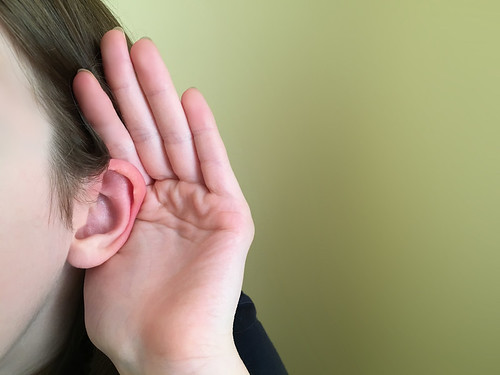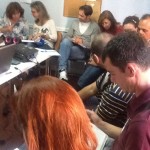Working with Coursebooks: Gathering Intelligence, Making a Choice
Coursebook evaluation checklists
 The best known textbook evaluation and selection book was written by Alan Cunnigsworth in 1995 – that’s several years ago but, still, within the communicative approach era, so there is a definite bias in the checklists presented with a leaning towards communicative methodology. Cunningsworth himself suggests that teachers make their own evaluation checklists – fair and wise advice, for even the best checklist cannot guarantee that the teacher who uses the material will have the same philosophy to education and teaching approach to match. Each one of us is a fliter and and we sift through approaches and take and use and transform them in very personal ways.
The best known textbook evaluation and selection book was written by Alan Cunnigsworth in 1995 – that’s several years ago but, still, within the communicative approach era, so there is a definite bias in the checklists presented with a leaning towards communicative methodology. Cunningsworth himself suggests that teachers make their own evaluation checklists – fair and wise advice, for even the best checklist cannot guarantee that the teacher who uses the material will have the same philosophy to education and teaching approach to match. Each one of us is a fliter and and we sift through approaches and take and use and transform them in very personal ways.
So I thought I should make my own – with a clear statement that it has my own biases.
My Checklist
A. Details of Coursebook
- Title:
- Level:
- Age of Ss
- Accompanying materials pls tick
- CD/DVD roms
- audio files
- workbook
- teacher’s book
- companions
- grammar books
- videos
- readers
- Support Website
- other components
B. New Language Items (Structures/Functions)
- Is the syllabus in the coursebook organised according to structures, functions or both?
- Does the syllabus cover the items you feel appropriate or necessary for this level?
- If so, do you agree with the order/sequence in which they are presented? What would you suggest if you do not agree with the ordering?
- If the syllabus does not cover all the items you would wish to see at this level, which ones would you add?
- Which items would you omit?
- Is there sufficient material for grammar practice? Do you have to use any supplementary material? If so, what other material do you use?
- Do you feel that the grammar practice material in the coursebook helps your students use it on a long term basis?
- Is there any material for remedial work? If not, do you feel there should be some in every unit or every so many units?
- Do all the items merit the same amount of remedial work? If not, which ones merit more attention?
- ls there enough of the following for the practice of grammatical/functional items? (Yes or No answer)
- Items presented in context/situation
- Concepts clear to the students
- Clarity of form
- Information about use
- Controlled oral practice
- Personalized practice
- Freer oral activities
- Fluency tasks
- Written consolidation in context
- A clear, concise summary of the main points
C. The Vocabulary
1. What’s the treatment of vocabulary in your coursebook like? Please tick.
- Appropriate for the level
- Appropriate for your students
- Too many items per unit
- Too few items per unit
- Meaning illustrated well
- Useful presentation material
- Vocabulary guessing tasks
- Consolidation activities
- Checking activities
- Use activities (oral/written)
- Vocabulary games
- Revision across units
- Collocation activities
- Vocabulary work in phrases
2. Do you need to supplement coursebook work with extra vocabulary activities? If so, what kind? What are some of the sources you use?
D. Pronunciation work
1. Is there any work on pronunciation?
2. Is it enough for your students’ needs?
2. Do you consider the tasks included useful?
3. Has your students’ pronunciation improved as a result of the tasks included?
4. Is there sufficient material to cover the following areas of English pronunciation?
| YES | NO | RECOGNITION | PRODUCTION | |
| Individual sounds | ||||
| Sound linking | ||||
| Word stress | ||||
| Intonation | ||||
| Sentence stress & Rhythm | ||||
| Intonation | ||||
| Chunking/pausing appropriately |
5. Please, look at the areas listed in 4 above and consider whether the practice material available is suitable for recognition/ear-training as well as for student production of the desired features
6. If your first language is not English, what kind of extra help would you, as a teacher, need in terms of pronunciation practice?
E. Listening skills development
1. What percentage (of time) per unit is given to listening?
5% ( ) 10% ( ) 20% ( ) 30% ( ) 40% ( ) 50% ( )
2. Which of the following activities are included in the coursebook)
| YES | NO | |
| Listening to conversational material | ||
| Illustrating new structures/functions | ||
| Listening to understand the main points | ||
| Listening to authentic recordings | ||
| Discussions prior to listening | ||
| Listening for specific information | ||
| Diagram (map, grid, flowchart) completion | ||
| True and false statements | ||
| Intensive listening; detailed comprehension | ||
| Follow up speaking activities | ||
| Follow up writing |
3. Please, look back through the activities/objectives of No 2 and asterisk the ones which you consider essential whether they exist in your coursebook or not.
4. Please, comment on the quality of the recordings
5. Are the topics interesting to your students?
6. Is there enough variety of listening texts?
7. Are there any authentic recordings? If so, from what sources?
8. Do you feel that the taped material is a fair representation of the way native speakers speak? Whatever your answer may be, how do you know?
9. What types of taped material and activities would you like more of?
10. Overall, do you feel that your students have become better at listening due to the material and the skills training in your coursebook?
![]() Pedro Ribeiro Simões via Compfight
Pedro Ribeiro Simões via Compfight
F. Reading skills development
1. Is there enough variety of text?
2. Are the texts appropriate to the level and age of your students’?
3. Are the topics interesting & motivating?
4. Which of the following activities are included in the coursebook?
- Reading to understand the main points
- Reading authentic texts
- Lead-in activities prior to reading
- Reading for specific information
- Note-taking while reading
- Variety of comprehension tasks
- Vocabulary guessing activities
- Follow up speaking activities
- Follow up writing
- Diagram (map, grid, flowchart) completion
Please, asterisk those tasks from the list above which you feel should be included whether or not included in your course book.
5. Overall, would you say that this coursebook ca help your students become better/faster/more efficient readers?
6. Will you need to supplement this coursebook with extra reading? if so, list your sources
G. Speaking activities
1. Comment on the speaking activities in your coursebook. You can score them on a scale of 1 5 (5 being the highest and 1 the lowest score in each category)
- Amount (1 ) ( 2) (3 ) (4 ) (5)
- Relevance (1 ) (2 ) (3 ) ( 4) (5)
- Usefulness (1 ) (2 ) (3 ) (4 ) (5 )
- Manageability (1 ) (2 ) (3 ) (4 ) (5)
2. Which of the following speaking activities are included in your coursebook?
- Mechanical drills
- Meaningful drills
- Role play
- Guided discussions
- Free discussions
- Problem solving
- Information gap/exchange
- Simulations
- Games
- Oral reports
- Story telling
- Priority activities
3. Do you introduce any other activities apart from those found in the book? What type?
4. Do you consider any of the activities mentioned above difficult to use or unsuitable for your classes? If so which ones and why?
5. As a result of using this coursebook, do you think your students may become more fluent speakers?
H. Writing Activities
1. Which of the following general types of writing are included?
- letter to friend
- formal letter
- postcard
- report
- composition
- diary writing
- story
- speech
2. Are the writing tasks you ticked above appropriate to the level and age of your class?
3. Is there enough guidance/preparation for the writing tasks?
4. Are the writing tasks meaningful and contextualised?
5. Does the book give students any help with the following aspects of writing? Enough or not? Write YES or NO next to each activity type.
- Punctuation
- Paragraphing
- linking devices
- sentence patterns
- sentence ordering
- choosing the right words
- layout (e.g., letters)
- use of reference words {e.g. ‘he’. It’)
- types of paragraphs
- organisation of ideas
- getting ideas, getting started
- drafting, editing, revising
J. Contexts & Topics
1. Are they relevant to your students’ needs, lives and culture?
2. Are they interesting to you?
3. Do you think they will interest your students? How do you know this?
4. Is there a story line in the book? Yes ( ) No ( )
5. Is the choice of topics in the book generally appropriate for the age group you are teaching?
6. Is there a variety of topics and themes?
K. General Balance/Amount of:
| Materials for……. | Too many | Not enough | Just enough |
| Listening | |||
| Reading | |||
| Writing | |||
| Speaking | |||
| Grammar | |||
| Vocabulary | |||
| Pronunciation |
L. The Teacher’s Guide
Look at the Teacher’s notes and pick the adjectives or phrases from this list which best describe them for you. Please, circle or underline as many as you think appropriate.
clear confusing
brief long
concise vague
indispensable unnecessary
interesting uninteresting
easy to follow cluttered
well-ordered muddled
learner centred teacher centred
a life saver useless
adequate inadequate
extra activities nothing extra included
Please, add as many other adjectives or phrases as you wish to this list.
3. What should the ‘ideal’ Teacher’s Book contain in your opinion?
M. Other Support Materials
1. If there are other support materials how often do you use them?
2. What would you like more of ?
N. Student Reactions
A good idea is always to pilot a unit of work – here are some questions you could consider.
1. How do your students like the material? How do you know this?
2. Are there any parts of each unit that they usually like doing? Which ones? Please, be as specific as you can.
3. Which parts do they usually not like doing? Why?
XIV. SUMMARISING COMMENTS – You and the material
1. How far does this coursebook satisfy you as a teacher? Why / Why not?
2. Will you use it again in future? If not, what will you replace it with?
3. Does using the material add anything to your professional Development as a teacher?
© CELT Athens @ Marisa Constantinides
N.B. This was first presented as a talk and has been amended since.
Cunningsworth, A., 1995, Choosing Your Coursebook (Handbooks for the English Classroom) Heinemann, 1995






Dear Marisa,
I’d add a question relating to recordings of speakers from countries/ with accents and ways of speaking that the learners are liable to meet/ deal with.
🙂 Anne
Hi Anne, and thanks for suggestion.
Why don’t you go and change this in the googlewave?
I think there’s lots missing here – like cultural info, stylistic awareness… the more I think about it the dizzier I get…